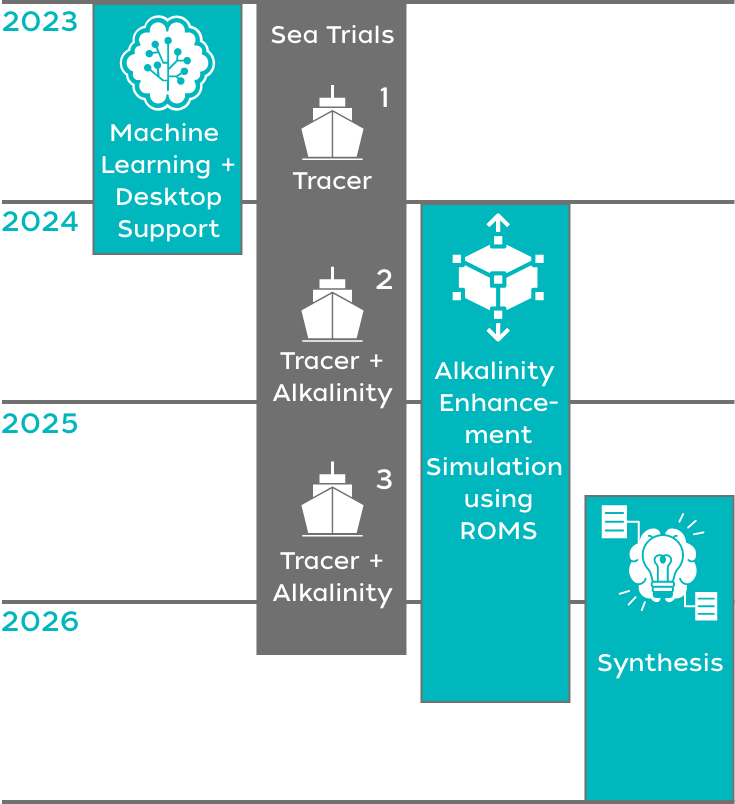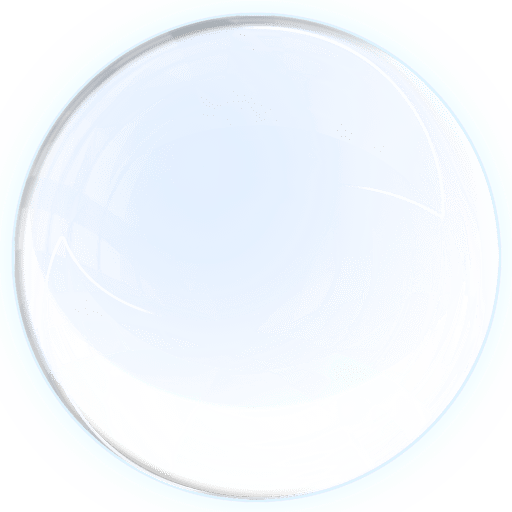
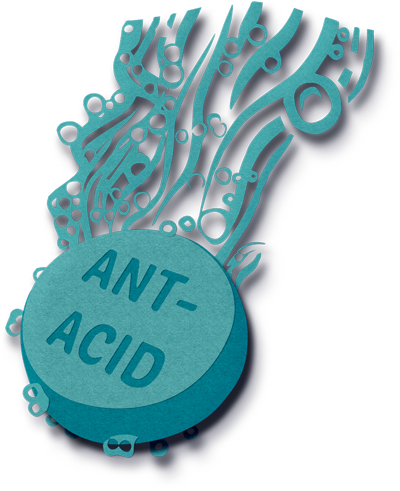
Discovering the potential of ocean chemistry to combat climate change
Can ocean alkalinity enhancement help remove
carbon dioxide from the atmosphere?
What is it?
Ocean Alkalinity Enhancement (OAE) is a carbon dioxide removal approach that enhances the ocean’s natural ability to remove carbon from the atmosphere, which is a critical part of Earth’s carbon cycle and a moderating influence on climate change.
Why are we doing this study?
Enhancing our oceans alkalinity could be a significant tool for regulating atmospheric carbon but many questions remain. How effective is it? How safe is it? How will it actually work in the real world? A team at WHOI is moving forward, along with an array of instrumentation and expertise, to find the answers.
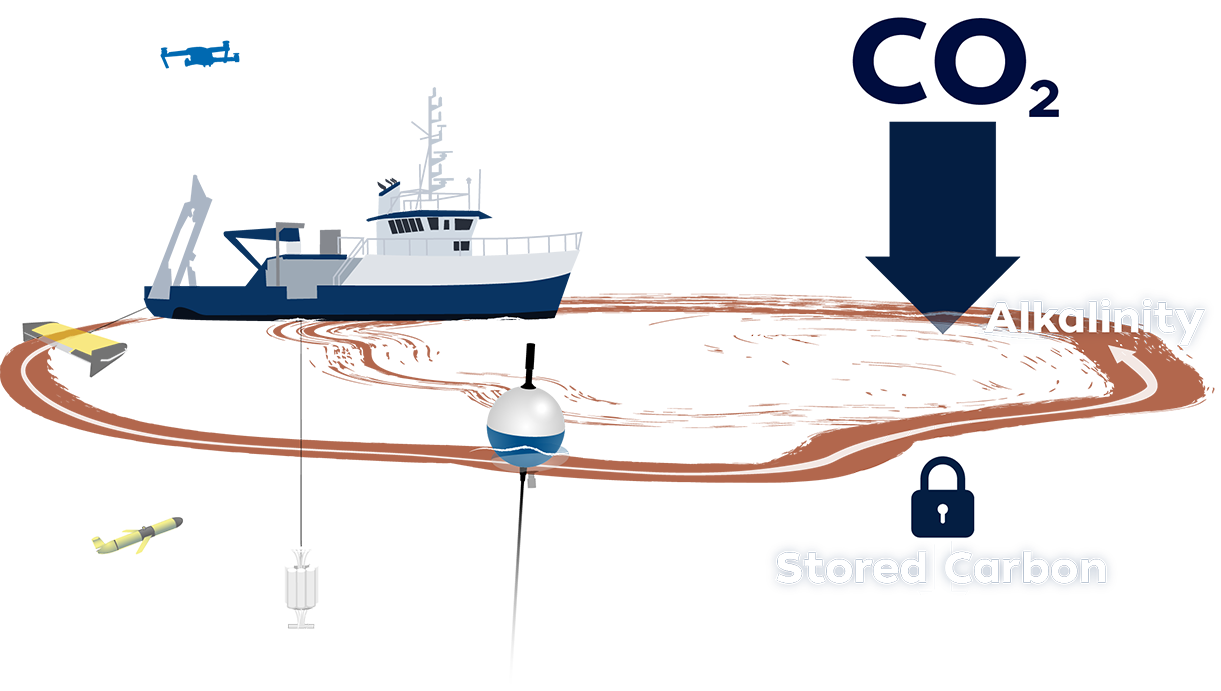
Drifters/Buoys
We will release drifting buoys equipped with sensors that passively follow the water currents, making measurements as they go.
Water Sampling Rosette
We will take bottle samples of seawater at different depth horizons to monitor the chemical and biological makeup of the experiment as it progresses.
Autonomous glider
In later experiments, we will use autonomous underwater gliders equipped with sensors to monitor carbon uptake and ecological impacts of alkalinity enhancement. We can directly compare these measurements with our ship surveys and with ocean model results.
Towed vehicle
We will use sensors attached to a towed vehicle that “flies” up and down behind the ship to evaluate the dilution and dispersal of dye in the water over time.
Drone
We will use drones and satellite imagery to monitor the spreading of dye at the ocean surface.
Dye
We are using a nontoxic, harmless, fluorescent dye known as Rhodamine WT, to label a patch of water and track its dilution and mixing with surrounding seawater. This experimental design lets us monitor how fast alkalinity might spread out in the ocean, and will help us measure how much carbon storage an alkalinity release could accomplish.
CO2 (acid)
About 25% of human-made carbon dioxide emissions enter the ocean every year, causing ocean acidification. The Gulf of Maine is experiencing acute warming and acidification, threatening our longstanding connection to the ocean.
Alkalinity (base)
Alkalinity, or the buffering capacity of seawater, is why ocean pH is basic (it’s about 8.2). By adding alkalinity to seawater, we increase its buffering capacity, allowing seawater to take up and neutralize atmospheric CO2.
Stored carbon (neutral)
As alkalinity reacts with CO2, the pH balance of seawater is restored and carbon is locked away as neutral bicarbonate ions. Our project will evaluate how efficient this reaction is, and the safety of storing carbon in seawater using alkalinity enhancement.
The Field Trials
The planned field trials are designed to be small in order to minimize disruption of the marine ecosystem while still maximizing the information about carbon uptake and potential environmental impacts if the method is deployed at scale. The LOC-NESS project’s primary objective is to gain an unbiased, independent scientific viewpoint and to develop the tools and understanding of OAE and the related monitoring approaches needed by regulators and community members to make informed decisions as the pressure for industry efforts increases.
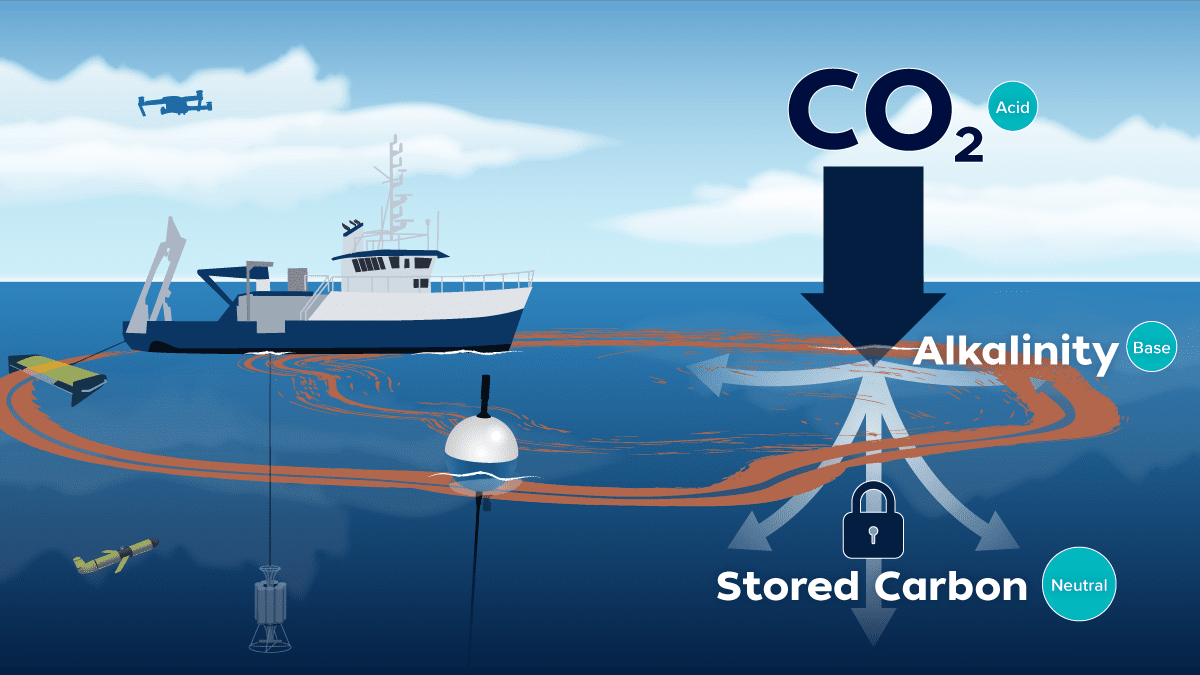
The Field Trials
Trial 1: Dye-Only Field Trial South of Massachusetts
The dye-only trial the LOC-NESS team conducted in September 2023 was indispensable to our ability to plan for our upcoming alkalinity dispersal trials. An analysis of data gathered on the trial made our the monitoring strategy for our upcoming alkalinity trials more efficient and has allowed us to increase monitoring efforts in critical places.
Trial 2: Alkalinity Field Trial South of Massachusetts
Pending permitting from the Environmental Protection Agency a limited, controlled field trial of 20 tons of alkalinity is planned 10 miles off shore in federal waters south of Massachusetts. This trial will take place in the same location as the dye-only trial completed in 2023.
Trial 3: Alkalinity Field Trial in Gulf of Maine
Pending permitting from the Environmental Protection Agency a limited, controlled field trial of 200 tons of alkalinity is planned 40 miles off shore in federal waters in the Gulf of Maine one year after the first alkalinity trial.
The planned field trials are designed to be small in order to minimize disruption of the marine ecosystem while still maximizing the information about carbon uptake and potential environmental impacts if the method is deployed at scale. The LOC-NESS project’s primary objective is to gain an unbiased, independent scientific viewpoint and to develop the tools and understanding of OAE and the related monitoring approaches needed by regulators and community members to make informed decisions as the pressure for industry efforts increases.
Project Timeline
Hover over the icons to learn more
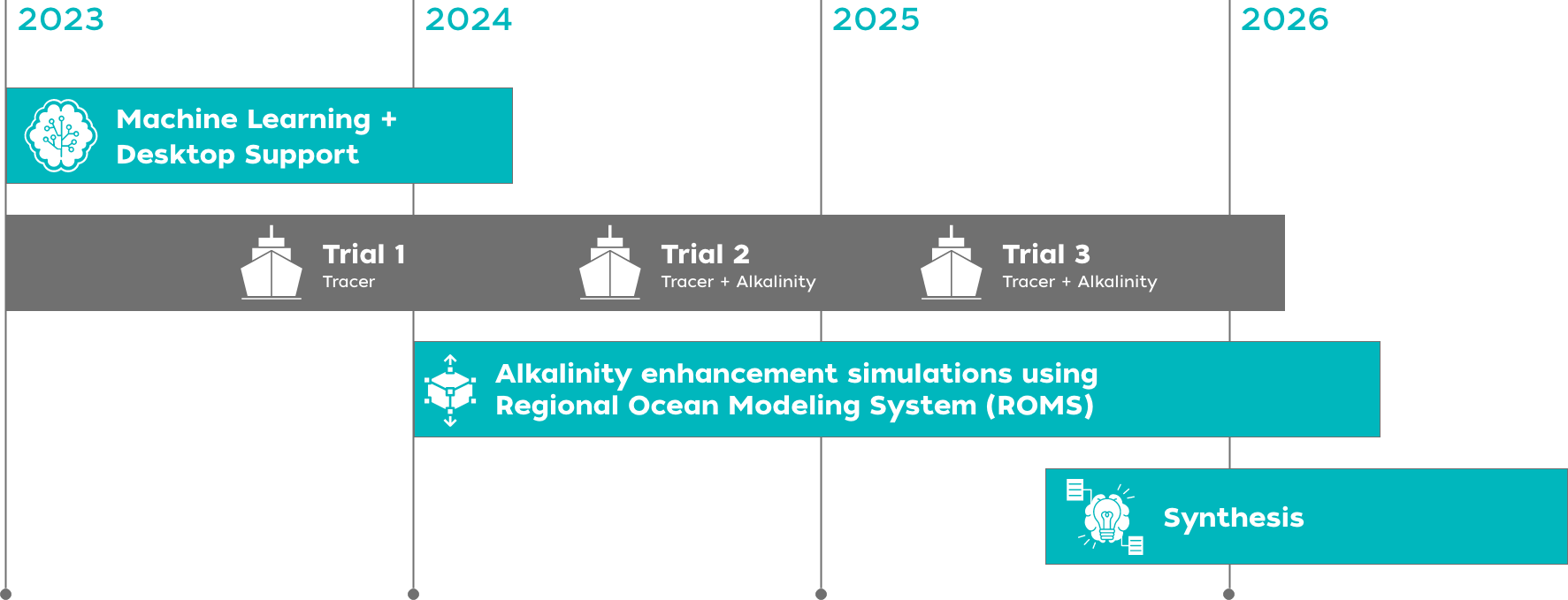
Machine Learning & Desktop Support
We are developing data products of regional trends through time in ocean chemistry, physics, and biology. We will use these products to make decisions about our experiment location, timing, and logistics.
Trial 1Trial 1
We need to be able to track alkalinity once it is added to seawater, and it will disperse and dilute quickly with ocean currents. Alkalinity itself is colorless, odorless, and has a small impact on ocean chemistry, so we have to track it using a secondary tracer. In Trial 1, we will “label” a patch of water with an inert, nontoxic fluorescent tracer and track it for several days using a range of approaches.
Trial 2Trial 2
Once we have demonstrated that we can track a patch of labeled water, we will add alkalinity along with the dye tracer to simultaneously measure its dispersal and its reaction with atmospheric CO2.
Trial 3Trial 3
We will scale up our experiment in Trial 3 with a larger demonstration-scale experiment. This experiment will also use autonomous underwater vehicles to help us monitor the plume for an extended period of time.
Alkalinity enhancement simulationsAlkalinity enhancement simulations
We will pair these experiments with predictions of OAE efficiency and impact in the Northeast region. To do this, our team is using a state-of-the-art ocean model that simulates the Northeast Shelf and Slope region to high accuracy.
SynthesisSynthesis
We will bring our data products, experiments, and models together in a final stage to present results to the scientific community and stakeholders, with recommendations for the efficiency and environmental impacts of OAE in the Northeast region.
